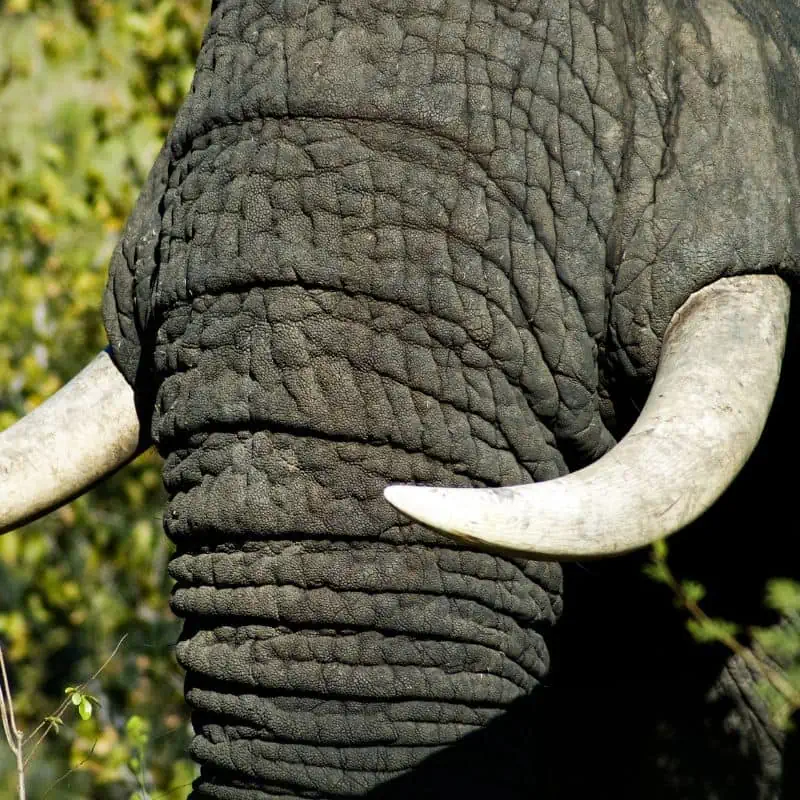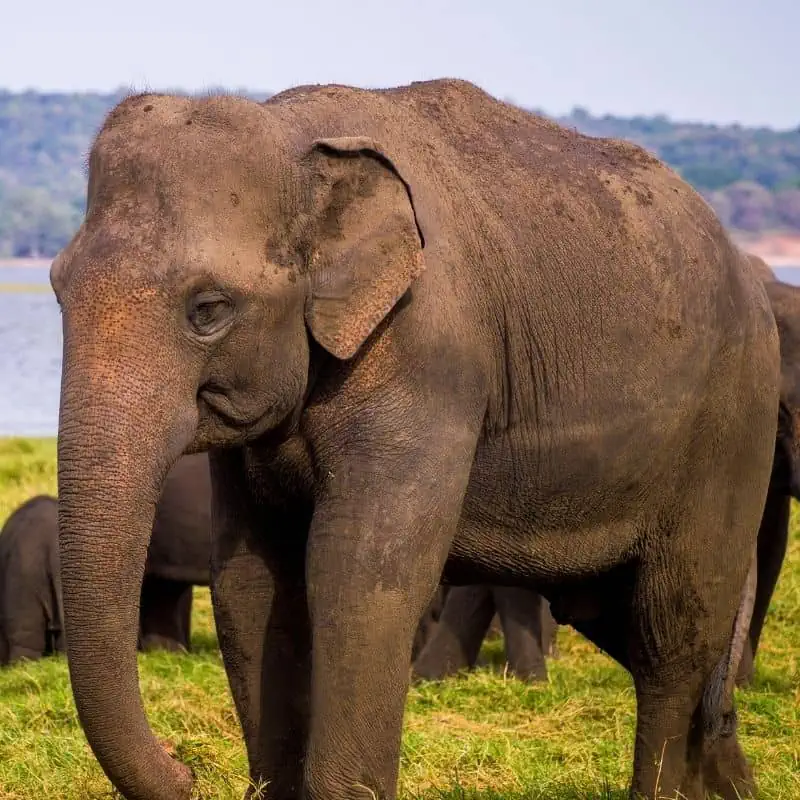Elephants are majestic creatures that have long captured the imagination of people all over the world. One of the most striking features of these animals is their large tusks, which are used for various purposes. However, the illegal trade in elephant tusks has led to a significant decline in elephant populations and has become a major conservation concern.
Elephant tusks are long, curved, ivory-colored teeth that protrude from the upper jaw of elephants. They are made of a complex, porous material called Dentine, similar to human teeth. Elephant tusks serve various purposes for elephants, including but not limited to digging for food, and water, marking territory, and defense against predators.
In this article, we will take a closer look at the biology and ecology of elephant tusks, as well as the current state of the illegal trade and efforts to protect these magnificent animals.

What’s the Importance of an Elephant’s Tusks?
The anatomy of any animal is essential for its survival and allows it to thrive in its habitat.
Let’s look at what tusks are all about in an elephant’s life:
What Are Tusks Made Of?
Tusks comprise of Dentine, a tough, bony tissue that makes up the bulk of the tusk.
It’s composed of small, thin-walled tubes filled with dentinal fluid. The dentinal fluid helps to nourish the tusk and keep it strong.
If we look at the outside, the tusk is covered with a thin layer of a complex, shiny substance called enamel.
The enamel helps to protect the tusk from wear and tear. Elephant tusks are also rich in minerals, including calcium and phosphate, which help to keep them strong and healthy.
So to sum it up, it’s the most visible of the elephant’s teeth.

What Are Tusks Used For?
Elephants use their tusks to fulfill various needs, such as defense against predators. Their natural predators, like lions and crocodiles, are pretty strong, so tusks provide that added safety.
Baby elephants are hunted and killed more because they don’t have strong tusks.
Furthermore, elephants use their tusks to create social bonds. They often greet or show affection by touching their tusks or entwining them with one another.
Elephants also use their tusks to dig holes in the ground to access underground water sources and dig up roots, tubers, and other types of food.
Their tusks also aid them in scraping bark off trees and carving into tree trunks to mark their territory, which is an essential part of wildlife.
While they’re at it, elephants use these tusks to move branches or lift trees out of their way, which explains how strong these tusks are.
Do All Elephants Have Tusks?
Both male and female elephants can grow tusks, although it’s more common for males to have larger tusks.
In some populations of elephants, a significant proportion of females may also have tusks, while in others, only a tiny percentage have tusks.
The size of elephant tusks can vary widely. Sometimes, tusks can be over 8 feet long and weigh over 100 pounds.
However, the size of tusks can also depend on various factors, including the elephant’s age, size, genetics, and the environment it lives in.
For instance, it’s more common for African Bush and Forest elephants, both male, and female, to have tusks. However, in Asian elephants, only a small percentage of females have tusks.

Why Do Humans Hunt for Elephant Tusks?
You must have seen those unique, perfectly designed sculptures of idols/gods, right? Most of them are made out of ivory.
The ancient Romans and Greeks used ivory for various purposes, including decorative and artistic pursuits. Even early depictions of Catholic saints were often made of ivory.
To this date, humans use elephant tusks for decorative purposes. Ivory is a symbol of wealth and social status in many cultures. You might have seen various products made out of ivory used for trading purposes.
Various reports show how thousands of elephants are killed annually for this reason. The ivory trade has had a devastating impact on elephant populations, as the demand for ivory has led to an increase in the poaching of elephants.
Efforts to Protect Elephant Tusks
The World Wildlife Fund (WWF) is working to address the issue of elephant poaching in several ways, such as supporting law enforcement efforts to crack down on poaching and the illegal trade of ivory.
They are also working with governments and local communities to implement measures that reduce the demand for ivory and other wildlife products.
Also, WWF is supporting the development of conservation areas that provide safe havens for elephants while researching to understand better elephant behavior and the factors that drive poaching to conserve them better.
Are Elephants Evolving to Lose Their Tusks?
Many researchers have reported how the elephants that lived through World War II and were hunted for their tusks to provide finances still bear consequences.
Those elephants left alive were likely tuskless naturally, carrying tuskless genes, which resulted in the coming generations having fewer tusks.
Typically, only 2 to 4% of African female elephants don’t grow tusks, but a recent study showed that one-third of the generation born after the war ended never developed tusks.
Similarly, a more significant population of elephants now wander tuskless due to heavy poaching.
Researchers in Mozambique’s Gorongosa National Park has observed that many elephants in the park lack tusks.
This phenomenon is thought to result from a combination of factors, including genetics and environmental pressures.
Consequences of Elephants Without Tusks
The lack of tusks can affect an elephant’s ability to access food and water and make them more vulnerable to predation.
When a female elephant carries one copy of the tuskless mutation, she will not have tusks. Half of her daughters will be tuskless, while the other half will have tusks.
Among her sons, half will have tusks, while the other half will potentially die due to the effects of mutation.
This inheritance pattern results in a higher proportion of tuskless elephants in some populations.
Final Thoughts on Elephant Tusks
Elephant tusks are indeed a beautiful creation, but it is necessary to understand that these tusks belong to elephants more than they do to us – for decorative purposes.
Through poaching and other hunting activities, we’re witnessing a real-time genetic shift in the elephant species.
FAQs
Why Are Elephant Tusks So Valuable?
Elephant tusks have been a symbol of wealth and status since ancient times. They are unique and often used as valuables for ivory trading. However, the ivory trade is now considered illegal due to decreasing elephant populations.
Can Elephants Live Without Tusks?
Yes, elephants can live without tusks. However, since these tusks are multifunctional, it becomes hard for an elephant to live without them. They often get hunted by a natural predator since they don’t have tusks for self-defense.
What Are Elephant Tusks Called?
Elephant tusks are teeth and incisors that are elongated and curved; they’re called tusks. They continue to grow throughout the life of an elephant and are called ivory.
